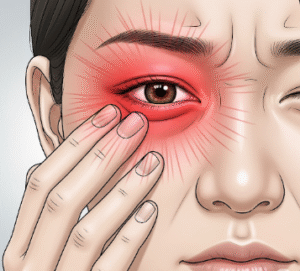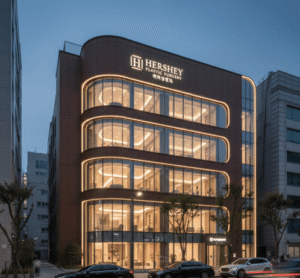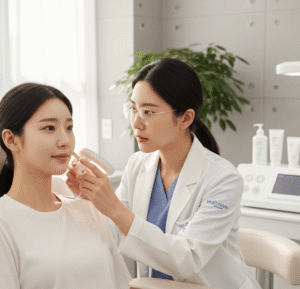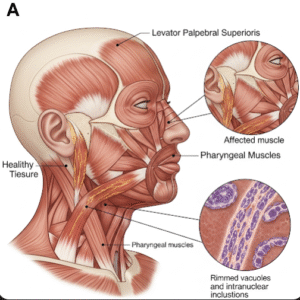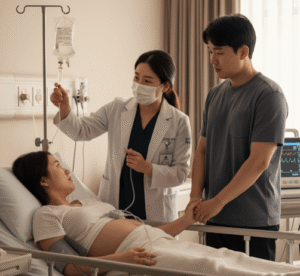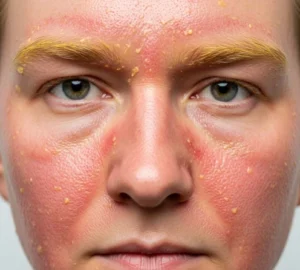Overview
Fibrocystic breast changes are a benign (non-cancerous) condition characterized by lumpy, tender, and sometimes painful breasts due to hormonal fluctuations, particularly during the menstrual cycle. It is one of the most common breast conditions among women of reproductive age. In Korea, where breast health awareness is high, women can access advanced diagnostic tools such as digital mammography, breast ultrasound, and MRI in addition to specialized breast clinics for evaluation and management. These changes are not considered a disease but a normal variation of breast tissue, although they can sometimes mimic the symptoms of breast cancer, making accurate diagnosis essential.
What are Fibrocystic Breast Changes?
Fibrocystic breast changes occur when breast tissue undergoes cyclic changes in response to estrogen and progesterone. This leads to fibrous tissue thickening and the formation of fluid-filled cysts. The condition is usually bilateral (affecting both breasts) and symptoms often fluctuate with the menstrual cycle, becoming worse just before menstruation and improving afterward.
Symptoms
- Breast pain or tenderness, especially before menstruation
- Lumpy or rope-like breast texture
- Swelling in one or both breasts
- Cysts (fluid-filled sacs that may feel movable and tender)
- Nipple discharge (clear, green, or brown, but not bloody)
- Fluctuation of symptoms with menstrual cycle
- Improvement of symptoms after menopause
Causes
- Hormonal fluctuations (estrogen and progesterone) during the menstrual cycle
- Overgrowth of breast tissue (fibrosis)
- Formation of cysts due to blocked milk ducts
- Increased breast sensitivity to hormonal changes
- Genetic predisposition
Risk Factors
- Women of reproductive age (20–50 years old)
- Hormonal imbalance or sensitivity
- Family history of fibrocystic changes
- Use of estrogen therapy or hormonal contraceptives
- High caffeine intake (sometimes associated with worsening symptoms)
Complications
- Discomfort affecting daily life
- Difficulty distinguishing benign lumps from malignant lumps without medical tests
- Anxiety and stress due to fear of breast cancer
- Rarely, proliferative fibrocystic changes (with atypia) may slightly increase the risk of breast cancer
Prevention
While fibrocystic breast changes cannot always be prevented, symptoms can be managed by:
- Reducing caffeine and salt intake
- Wearing a well-fitting supportive bra
- Applying warm compresses to relieve breast pain
- Maintaining a balanced diet and regular exercise
- Avoiding smoking and excessive alcohol
- Regular breast self-examination and check-ups
Treatment Options in Korea
Diagnosis:
- Clinical breast examination by a doctor
- Breast ultrasound – preferred for young women with dense breasts
- Mammography – more effective in older women
- Breast MRI – used for complex or unclear cases
- Fine needle aspiration or biopsy – if a suspicious lump is found
Medical Treatments:
- Pain relief with acetaminophen or NSAIDs
- Oral contraceptives to regulate hormone fluctuations
- Hormonal therapy in severe cases (rarely used due to side effects)
- Vitamin E or evening primrose oil supplements (sometimes prescribed)
Surgical or Advanced Interventions:
- Aspiration (draining fluid from large, painful cysts)
- Surgical removal of persistent or suspicious lumps
Rehabilitation & Support:
- Patient education programs in Korea’s breast clinics help women distinguish between benign and concerning symptoms.
- Lifestyle counseling for diet and stress management.
- Psychological support for women experiencing anxiety related to breast changes.
- Regular follow-ups to monitor breast tissue health, especially for women at higher risk of breast cancer.


